This story is an excerpt from the book Alabama Footprints: Immigrants
Brown’s Village is a Cherokee village founded about 1790 located on the west side of Brown’s, or Thompson’s Creek, in Marshall County near the site of the present village of Red Hill.
Brown’s Valley is a valley extending from the northern part of Blount County, Alabama northeastward through Marshall and Jackson Counties, into the State of Tennessee, where it becomes the Sequatchie Valley.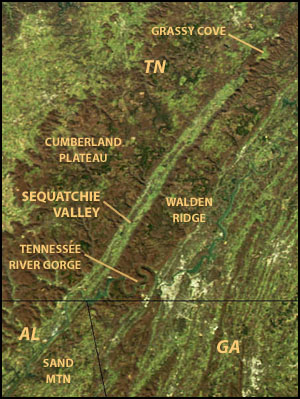
Named after a Cherokee chief
The valley and village were named after Colonel Richard Brown, a celebrated Cherokee chief, whose home was at one time in its limits.
Richard Brown was a man of note in the old Cherokee Nation and commanded a company of friendly Cherokees under General Andrew Jackson in the Creek War of 1813-14.
The area was reached by two important Native American trails, one leading from Ditto’s Landing (now Whitesburg) across Brindley Mountain, the other being the “Creek Path,” a noted Indian trail leading from the Coosa, near Ten Islands, across Raccoon, or Sand Mountain and down Brown’s Valley to the Shoals, in Tennessee River, on the farm of Judge Street and two miles below Guntersville, thence it extended into Middle Tennessee. About fifteen miles south of this village a branch trail turned off and led to the Creek Settlement of Middle Alabama.
Settlers came into the valley as early as 1816, but the Native Americans and the United States Government forbade their settlement so they continued farther south. By 1818, however, the valley had a mixed population of Cherokees, Creeks, and whites.
Among the earliest settlers were Alex Gilbrath, Jeremiah Vestal and J. H. Henderson.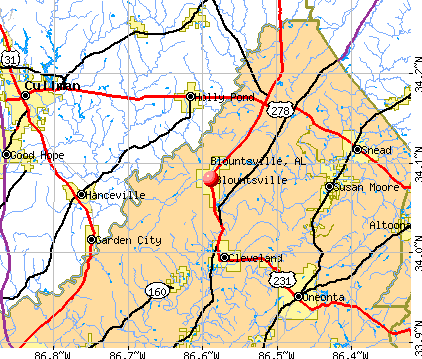
Brown and Blountsville valleys cover 100 miles
“Blountsville Valley and Brown’s Valley are really the same, they being bounded each side by the same unbroken chain of mountains, and all the difference between them is a low flat ridge or watershed that runs across the valley and divides the waters of the Warrior from those of the Tennessee. This ridge is so low, and on the south side, the slope is so gradual, as not to be perceived by a traveller. If he is going to the north, he will be surprised by finding himself in the waters of the Tennessee, without knowing exactly when or where he crossed the main ridge.”1
The total length in Alabama of the Brown and the Blountsville Valleys is more than 100 miles, the greatest width less than 5 miles. Geologically Brown Valley is a narrow trough scooped out of the top of an unsymmetrical anticlinal fold. The fold, as a round unbroken anticlinal ridge. is continuous for many miles to the southwest of where the valley stops.
Troops were on their way to Baird’s Bluff Deposit
“The troops from Tennessee that invaded the Creeks in 1812, marched through Madison County, on their way to Baird’s Bluff Deposit, and made a wagon road to that place (which is near the Blount County line;) but Gen. Coffee’s mounted detachment continued up through Brown’s Valley and Blountsville Valley on its way to Old Town; and thus a great number of Tennesseans had an opportunity of seeing the country and learning the distance and the way–important information acquired.”2
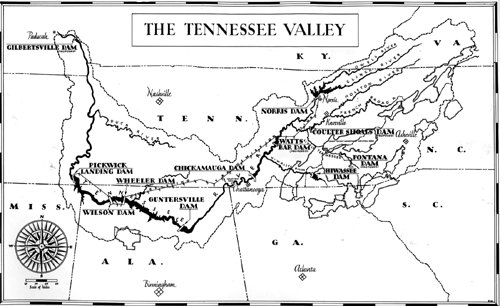
Deep coves and gorges create beautiful scenery
The Tennessee River follows the trough as far as Guntersville, where it breaks through the northwest barrier and flows to the northwest. For 25 miles southwest of Guntersville, the valley is drained by Brown and Big Springs Creeks, which flow northeastward to the Tennessee River. The remainder of the southwest end of the valley is drained into the Mulberry Fork of the Black Warrior River.
The deep coves and gorges in the high mountain rims lend much to the variety of the scenery of this valley. The views from the tops of the bluffs around them are often wild and picturesque. Numberless springs of very cold water flow from the capping bluffs of the mountain rims. The steep mountainsides contain some caves and many lime sinks and big springs. The best-known of the caves is Bangor Cave, and of the springs, perhaps the Big Spring southwest of Guntersville. Blount Springs is situated in this valley.
“In 1818, Col. Brown went to Washington City for the avowed purpose of selling to the whites or ceding by treaty, all that portion of the country. He advised the Indians to hold themselves in readiness to leave the country on his return. They accordingly assembled at Gunter’s Landing, for the purpose of emigrating; but the death of Col. Brown shortly afterward, (who died at Rogersville, in Hawkins County, Tennessee,) prevented, for many years, the ratification of the treaty, and consequently the removal of the Indians.
As soon, however, as it was known that the Indians had collected together with a view to emigrating, the restless whites thronged into the country which they had abandoned, and obtained such hold, that they never could be entirely driven out. Brown’s Valley at this time, showed a motley population of Cherokees, Creeks, and whites. The United States troops cut down the growing crops of the whites, and burned their houses; but with all this severity, they were unable to clear the valley of their presence.
Lawless characters were found in the valley
This portion of territory gave great trouble to the citizens of old Blount, as it prevented the ordinary execution of the laws in many instances. All kinds of lawless characters were found in the valley. Murders were frequent, but with little chance to bring the guilty to punishment. Thomas Davis, the counterfeiter, who was executed at Tuscaloosa, in 1822, resided there from 1818 to 1820. He was known in the valley by the name of Scott; and it was thought that some of his pupils were left there after his execution, who long troubled the country with their frauds.
“Father Biggs,” one of James Fenimore Cooper’s heroes, was also a citizen of this valley; but he was more included to drinking and fun, than to mischief. It is hard to imagine anything more troublesome to an orderly community, that the neighborhood of such a lawless colony as this. It was to old Blount, what Walter Scott says, Alsatia was at one time to London. It was a school for fraud, violence, and theft, and offered a safe sanctuary to violators of the law, from neighboring settlements. It continued to annoy the people of our county until the year 1832 when the Legislature extended the laws of the State over it.
The proposition before mentioned, of Col. Brown, to cede this valley to the General Government, gave rise to a strong party of anti-ceders–at the head of which was Stooka, [Stooka, means “Little Door,” in Cherokee] a full-blooded Cherokee, who threatened death to any Indian who should sell or lease to the whites. He even went so far as to threaten Col. Brown; but the latter was not a man to be deterred from his purpose by opposition; and had he lived to return, would no doubt have completed the treaty of cession at that time.
Stooka set out for his hunting and trapping expedition
In the fall of 1818, about the time Col. Brown departed for Washington, Stooka set out on his annual hunting and trapping expedition to the South. He embarked in a canoe on the Locust Fork of the Warrior, and on his way down, hunted and trapped for beaver.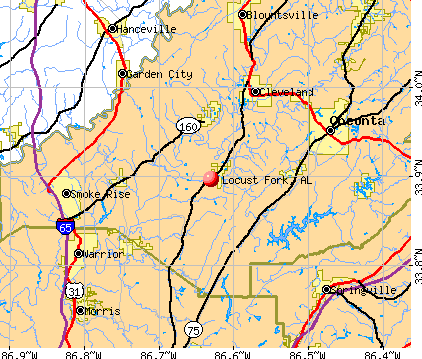
He passed Tuscaloosa, and went to Demopolis, where he sold his skins; and after an absence of several months, returned to the valley, to find it filled with the whites, who came in after the Indians assembled at Gunter’s Landing to emigrate. This was galling to the feelings of Stooka, and he grew bitter, sullen and morose. Within a few days after his return, on some slight provocation, he struck with a board, a youth, (the son of a Mr. Duke,) so violent a blow on the head, as to cause his instant death.
Stooka was placed in irons
The Indian light-horse immediately seized Stooka and having secured him with irons, delivered him to James T. Gaines (an agent for the U.S. to treat with the Indians) who chanced at the time to be in the valley. Owing to the determined character of Stooka, it was thought prudent, in addition to his irons, to place a guard of men over him; but the first night of his confinement, he contrived to break his fetters, forced the guard, and made his escape. He procured his gun and horse, and thus accoutred, bid defiance to his enemies, and vowed never to be recaptured alive.
He was known to be brave, having distinguished himself under Col. Brown, in several battles with the Creeks–particularly at the battle of the Horse Shoe–where he performed the daring feat of swimming the Tallapoosa river, in the rear of the town, and stealing the Creek canoes, in order to transport the Cherokees (then allies of the whites) across the river into the great bend. He was therefore justly considered by his people, a formidable character when aroused. Being now reduced to desperation, the Indians were afraid to even attempt his re-capture; and he, therefore, rode off unmolested. His course was however watched.
The news about the murder spread quickly
The news that a white boy had been murdered by an Indian, and that the murderer had escaped, spread rapidly over the country; and within a few days, bands of armed whites entered the valley demanding the murderer, and without any authority, threatening vengeance against the whole Indian tribe. The Indians knew very well, that these bands were not less to be feared because they were without authority; and the relatives of Stooka, in particular, expecting to be massacred, hid in a cave. The however sent out a messenger to the whites, praying for their lives, and promising to bring Stooka in, provided he was alive, and time allowed them to find him. To this proposition, the whites acceded, and, strange to say, departed without committing any act of violence.
As soon as the whites left the valley, the Indians called a council to determine how they should proceed to re-capture the desperate Stooka. It was finally concluded to send in pursuit, two brave warriors, well armed, to be commanded by Tooni the step-father of Stooka, who had brought him up. Tooni was not to carry arms. All things being in readiness, the pursuers departed up the Tennessee river; and after going about thirty or forty miles obtained information that they were near the place where the object of their search was then staying.
Tooni used all his influence to dissuade him from joining the Creeks
Tooni then directed his armed followers to conceal themselves in a small unoccupied hut which stood near the south bank of the river, and remain there concealed until he came to them. They were commanded to remain day and night, in the positions pointed out by their leader. Tooni then went alone to the lodging Stooka. He found him prepared to leave the Cherokees and join the Creek tribe. Tooni used all of his influence to dissuade him from joining the Creeks, but all in vain. He had determined and accordingly set out. His route was through “Turkey Town” and Tooni proposed to accompany him to that place.
They, therefore, went together, talking and thinking on the way, what was best for Stooka to do in his present emergency. Stooka was suspicious, watchful of his companion (and sometimes threatening) until Tooni suggested that it would be better for him to cross the river, and go through the State of Tennessee (where he was not known) to the Mississippi river, cross it, and join the Cherokees in the West. Tooni, moreover, promised to go with him, if he would agree to this course.
The proposition was accepted by Stooka at one and removed all suspicion. He became very kind and gentle in his manners. It was 12 o’clock when they turned about. Tooni, then said, they could reach the Tennessee river before night, hide their horses in the cane, and lodge in a small deserted hut on the bank, and next morning, swim their horses over the river and begin their journey to the far west. They accordingly reached the river about sunset, tied their horses in the cane; and Tooni, to assure Stooka that all was right at the hut, went forward to reconnoiter, and returning quickly, reported all safe. They then proceeded immediately to the hut, Tooni going before and entering briskly; but as Stooka entered, with his gun on his shoulder, he was compelled to stoop, and at the moment, a brace of balls was shot through his heart.
His body was to be carried to Brown’s Valley
This was done by Tooni’s warriors, who had been placed in the hut, in such positions, as not to endanger each other by a cross-fire. Thus fell the brave, but unfortunate Stooka!
The body was now to be carried back to Brown’s Valley and shown to the whites, as evidence that the Indians had redeemed their pledge. They, therefore, placed it in a canoe and paddling down the river all night, reached Gunter’s Landing early next morning. The father and relatives of the murdered youth, (as well as others who wished to come) were then sent for viewing the body, and to be satisfied with its identity. Some of the inhabitants of the Valley said it was not the body of Stooka, but that of a Creek Indian, whom Tooni had killed that he might deceive the whites with it. To remove, if possible, the doubts of such persons, the Indians then set for the mother of Stooka, who knew not of his death. When she saw the body, she wept, fell down on it, and cried, “my brave Son!”
The particulars of the above occurrence were received from Jeremiah Vestal, Alex Gilbreath, and J.H. Henderson, the latter of whom, was one of the guards placed over Stooka at the time he broke his irons and made his escape. I have given the circumstances at more length, because of the excitement which it gave rise to; and because it is, in itself, an interesting incident connected with the history of Brown’s Valley.
It is proper to add, that after this valley was finally ceded to the whites, the lands were not disposed of by a general sale, as the other lands in the county had been, but the occupants were allowed to retain possession of their settlements, on paying $1.75 per acre for the same. Such lands as were not occupied, were subject to entry in the ordinary way.3
SOURCES
- Powell, “Blount County,” in Ala. Hist. Society, Transactions, 1855;
- Northern Alabama (1888), p. 108;
- Brewer, Alabama (1872), p. 139;
- McCalley, Valley regions of Alabama, Pt. 1, Tennessee Valley region (Geol. Survey of Ala., Special report 8, 1896), passim.
- A Description and History of Blount County By George Powell From the Alabama Historical Quarterly, Volume 27, Spring and Summer 1965, pages 95 -132
1A Description and History of Blount County By George Powell From the Alabama Historical Quarterly, Volume 27, Spring and Summer 1965, pages 95 -132
2A Description and History of Blount County By George Powell From the Alabama Historical Quarterly, Volume 27, Spring and Summer 1965, pages 95 -132
3A Description and History of Blount County By George Powell From the Alabama Historical Quarterly, Volume 27, Spring and Summer 1965, pages 95 -132
This story and more can be found in ALABAMA FOOTPRINTS Immigrants
And Additional lost & forgotten stories such as:
- The Birth of Twickenham
- Captain Slick – Fact or Fiction
- Vine & Olive Company
- The Death of Stooka


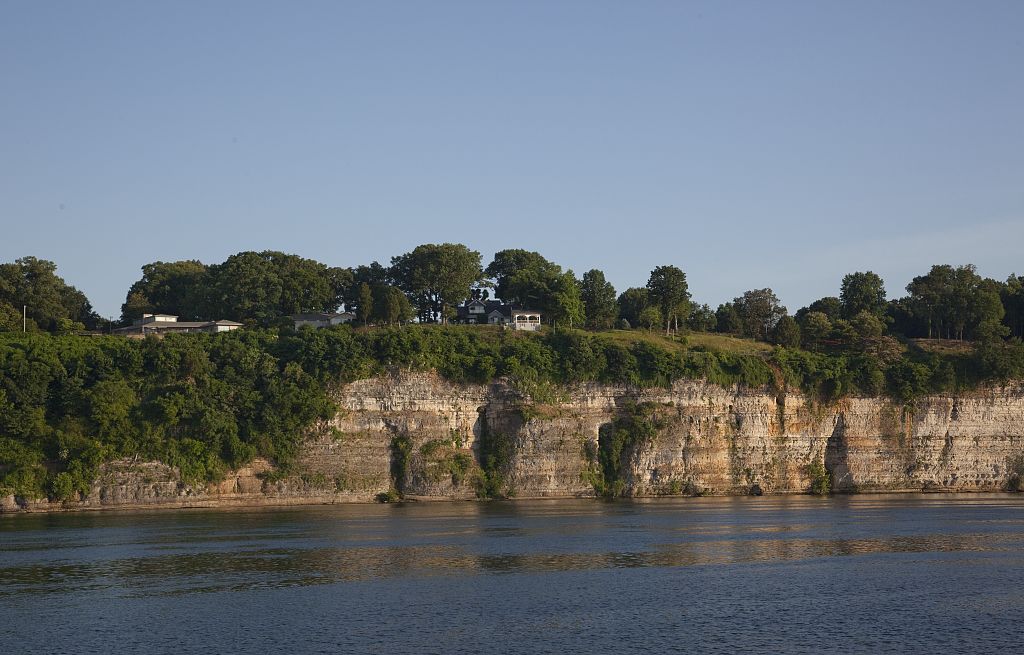
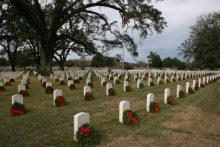
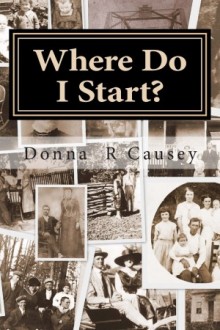

[…] Note: Congrats to Michael Anthony who found the answer in 18 minutes. It was Stooka. Click here to see the story with the correct answer. […]
The Brown/Blountsville ridge mentioned in the story, could you be a little more specific? I didn’t read the entire story, but I’ve always been curious about a low ridge line that follows the stretch of U. S. 231, between Blountsville and Rainbow Crossing, mostly through pastures on the west side of the highway.
This was a great article for those of us struggling with research on ancestors in the northernmost part of Alabama. It is said my gggg grandfather was born in the Sequatchie Valley, and I could never quite pinpoint why he would have been born there. His brother and family settled up in Paint Rock, AL. I now believe the family came down from northeast Tennessee to scout out the cheap Indian land.
Such an interesting story. Thank you for this article.